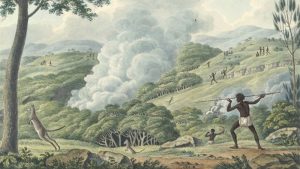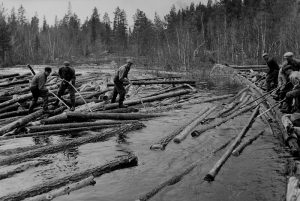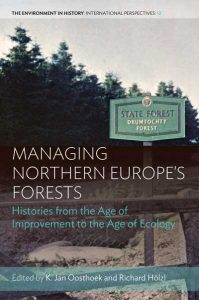In the spring of 2013 a group of environmental historians from around the globe was confronted with the following question: What are the most important events in environmental history? They were asked to nominate one event that, in their opinion, should be included in any global environmental history. This was part of a survey for a special issue of the journal Global Environment on environment and memory. The twenty-two entries that were returned provided an interesting window in what professional environmental historians regard as world changing environmental events (See list below). A video based on this survey was published on the Exploring Environmental History Website (see: https://www.eh-resources.org/podcast-57/) but it revealed considerable gaps both spatially and chronologically.
Spatially, North America and Europe are over represented, while Africa, Asia Africa and Australia have only one entry.
Chronologically, there was only one entry that straddled the boundary between Antiquity and the Middle Ages: the dust veil event of 536 CE. The Neolithic period is represented by the Agricultural revolution. The chronological focus is very much on the 19thand 20thcenturies and Antiquity and the Middle Ages are very much missing in action. Please suggest events during the Middle Ages and Antiquity!
To fill these gaps, the plan is to produce a follow up video for the Exploring Environmental History website. This allows for a more balanced spatial and temporal distribution and the inclusion of emerging research themes, for example the environmental history of space.
Scholars working in the field of environmental history are invited to suggest one event in environmental history to be added to the original list (see topics below). Please take a liberal view of “event” when suggesting entries, and include individuals, books, studies, or anything else that can reasonably qualify as an event. Explain your choice of an event in in one or two paragraphs of up to 250 words. Keep your explanation simple, as if you were addressing an informed layperson.
Email your entry by 15 January 2019 using the submission form on this website.
The original survey included the following events:
- Air pollution in Japan transported from China (2013)
- Assassination of Chico Mendes, 1988
- Chernobyl, 1986
- Stockholm Conference, 1972
- Earth Day, 1970
- The Santa Barbara Oil Spill, 1969
- “Operation Rhino”, kwazulu-Natal, South Africa, 1961
- Bombing of Hiroshima and Nagasaki, 1945
- Invention of the chainsaw, 1929
- Invention of Nitrogen-Fixing Techniques, 1913
- The Big Blowup, 1910
- The United States Bureau of Reclamation, 1902
- The Invention of Mass Destruction Mining, 1899
- Anthropogenic Climate Change, c. 1880
- The Beginning of the Global Career of Phylloxera, 1864
- Drilling of the World’s First Oil Well, 1859
- Plowing up the World’s Grasslands, c. 1850
- The Dust Veil Event, 536 CE
- Neolithic Agricultural Revolution, c. 10,000 BCE
- Crossing of Wallace’s Line, c. 60,000 BCE
- Chicxulub asteroid strike, c. 65 Million BCE
 Welcome to EH Resources the home of the Exploring Environmental History Podcast.
Welcome to EH Resources the home of the Exploring Environmental History Podcast.



Recent Comments